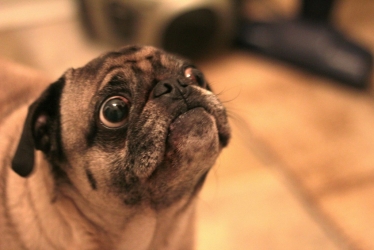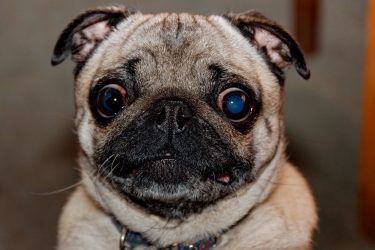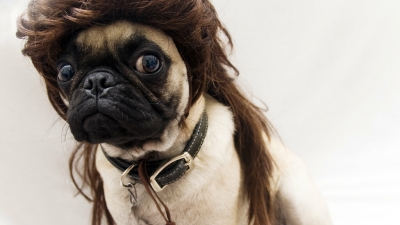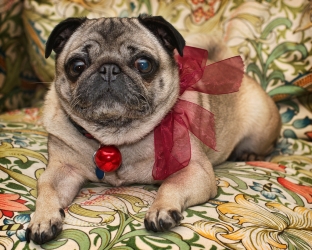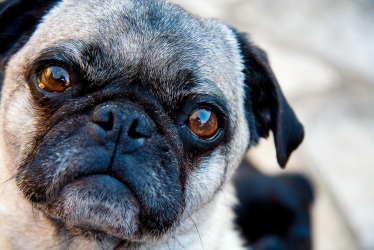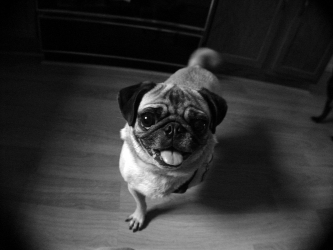Pug
Pug Behavior and Temperment
| Indoor Activity | Outdoor Activity | Vigor | Consistant Behavior |
| Dominance Strange Dogs | |
| Territorial | |
| Good With Children | |
| Good With Strangers |
Pug History
The Pug is related to the Pekingese, but has a short, thick, shiny coat. The Pug is believed to have been brought to Europe from China by the Dutch merchants of the East India Company. He soon became a very popular breed with Dutch. French, Italian, and English nobility. The Pug aquired it's French name "Carlin" in the eighteenth century, after a famous actor of the Commedia dell' Arte, Carlino, who was famous for his portrayal of Harlequin (a comedic character in a mask). Like the Pug, Harlequin wears a black mask, One thery is that in the 1700s and 1800s ladies keept Pugs, convinced that their beauty would stand out in contrast to the dog's ugliness, wit his noisy asthmatic breath, pushed in face, and rolls of fat.Pug Description
His loyalty and friendship are, however, limitless, and he will dedicate himself totally to his master. Amiable with his friends and exuberant in nature, he needs little care.Pugs typically weith between 14 and 18 pounds. The Pug has a round, irregular muzzle with a short, pushed-in nose, and usually develops a fat body. It has a curly tail that rests on his haunches and pendent ears. The color of a Pug's coat may include fawn (light, dark. or silvery), apricot yellow, and uniform black. An adult Pub typically weighs between 14 and 16 pounds.
A Pug is a house dog, much like his relative the Pekingese. Pugs are loyal to their owners, and friendly with straingers. They are exuberant in nature, and require little more than the affecton of their owners, which they will return many times over. Ugly as can be, but the Pug is really a delightful dog.
